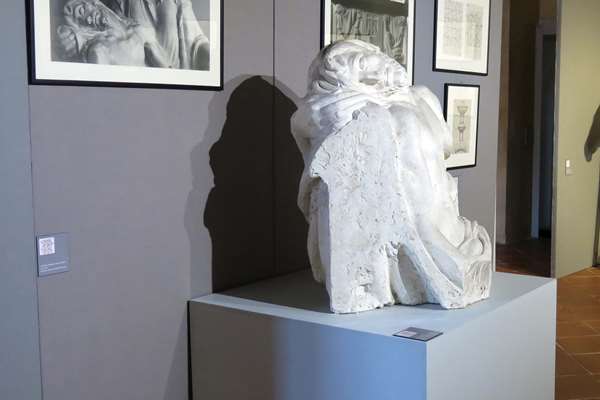
First floor
Next to the stairway that leads to the first floor one may admire the most emblematic artwork of the exhibit: the bust of Mother Nation which was part of the preparatory model for the monument to the Fallen of Saronno. The sculpture represents Italy who strings the bow in defense from the enemy; in her lap a young fallen soldier, whose head-piece is on display on the first floor. Along the stairway there are two full figure Victories, related to the Milano monument. In the second part of the exhibit there are drawings of furniture pieces and home furnishings with photos of the pieces which Andreotti sent to Stockholm for the International Exhibition in 1920. On exhibit there is also a series of drawings tied to his private life: the sanguine with the landscape of San Pellegrino in Cassero where the sculptor created his retreat and the intimate portraits of his wife Margherita, his eldest son Aldo and his brother-in-law Aldo Carpi. On display in the cases there are several archival documents, as the letters of Gio Ponti and Marcello Piacentini, the first regarding the project of the Milano monument and the second, the Bolzano one. Next to those there is the Family album. On the floor above, in the Hall of models, there is the series of sixteen models representing the Virtues, ‘originary ideas’ for the female figures of the altar of Bolzano. The artworks on the top floor which are strictly tied to the topics of the exhibit are indicated by a logo. The first floor hosts the documentary nucleus: first the drawings realized by Andreotti during his time at the front, then a selection of material that explains the genesis of the monuments dedicated to the Italian soldiers fallen during World War I: from the initial sketches to the clay models, from the plaster model to the one in bronze or marble. In this section the other plaster sculptures recovered from the deposits are on display. Christ stands out from the Pietà group in the Chapel of the Italian Mother, framed by some architectural projects and drawings for the same chapel. Smaller models are placed on wooden little perches coming from the artist’s studio.


